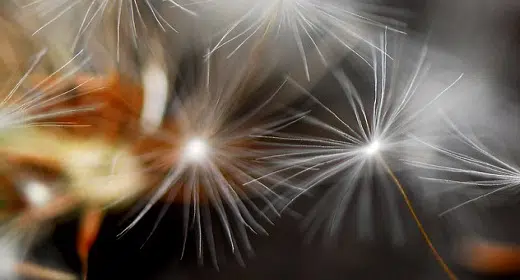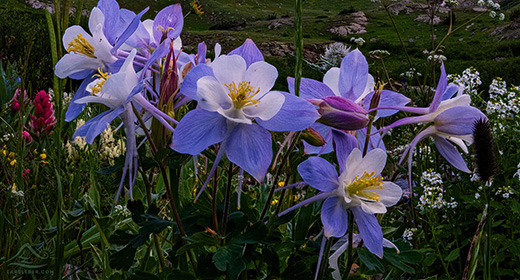by Hillary Goldthwait-Fowles: Life is filled with choices. One choice can send you down a road that is filled with joy, love, and laughter…
One choice can send you down a road filled with addiction, shame, blame, and guilt. One choice can keep you in the prison of unawareness. One choice can liberate you to a whole different life.
I was living my life in the unhealthiest of ways. I was drinking excessively, overeating everything and anything that was toxic to the system. I was completely dishonouring and devaluing myself, unaware of how that was playing out in my life. I was fully engaged in a co-dependent relationship with my now ex-husband where we hurled insults, and projected each other’s pain onto each other. Let’s just say that we spent 20 years not bringing out the best in each other. Unfortunately, this impacted other areas of my life – my work, my family, friends, and my son. Drama was the trauma. Victimization was the mentality.
This was all behind the scenes. To the untrained eye, it appeared that my life was pretty idyllic- large house with a lot of land, financial security, great job, soon-to be- PhD. Friends and family around me. Yet, all of it was a charade. All of it wasn’t real. I spent countless years spinning my wheels to maintain the persona of this so-called idyllic life. Thus, the energy of upholding the lie of having an idyllic life was literally killing my heart, body, and soul.
At the time, I was not aware of the fact that my life needed to be saved. It wasn’t until a moment in the pre-holiday daze of 2012 that I became highly aware of the fact that my life, my heart, and my soul were in desperate need of saving. It was in that moment that a crucial choice needed to be made. To quote a famous movie line, one can “get busy living, or get busy dying.” Fortunately, I chose to get busy living.
With the help of my therapist, I discovered mindfulness. This was in the winter of 2013. My therapist gave me the book Radical Acceptance by Tara Brach. This book serves as the foundation of my mindfulness practice to this day. Through reading this book, I discovered the power of the pause, which is the most critical aspect to any mindfulness practice. In the pause, according to Brach, we “don’t know what will happen next, but by disrupting our habitual behaviours, we open to the possibility of new and creative ways of responding to our wants and fears.” It was in that pause that I learned to lean into my hurt, pain, shame, and guilt as opposed to dulling those feelings with alcohol, sex, or food. I discovered that I had the power to change the narrative of my life by being present.
This was not an overnight realization. It has taken years and years of practice. I began meditating regularly in 2013, but was inconsistent. My mind would wander. I learned to use guided meditations through Tara Brach and discovered many others on YouTube. In the beginning, guided meditations helped to keep me focused and present, as opposed to wandering and giving up. Over time, my practice has evolved. I’ve shifted away from guided meditations and have experimented with chanting, mudras, and music. What I have learned through this experimentation is that I have become most fond of meditating with various crystals and solfeggio frequencies. Through my meditation practice, I have learned to listen to what my soul craves and design meditative experiences that help to fulfil my spirit, heart, and soul.
Now, I meditate every morning. Some mornings I meditate for 30 minutes. Other days I may meditate for 10. Either option is perfectly fine.
As an extension of this practice I have carved time to meditate during the work day. I drive a lot for work so listening to solfeggio tones while driving helps to keep me grounded and focused. Taking a reflective walk during the day where I am actively practicing box breathing (inhale for four, hold for four, exhale for four, hold for four) helps to alleviate tension and stress of a very busy work life. It also helps me to practice the pause. I tend to be more reactive in responses. Integrating mindfulness and meditation practices into my work day helps me to practice the pause, and has helped me to answer problems from a heart-centred space.
Another large discovery, and one that took longer to tease out, but has been revealed in part through my meditation/mindfulness practice, is that I have post-traumatic stress disorder (PTSD). There are times where I will avoid certain situations because those situations serve as triggers. I have spent years in a toxic environment in life and in work – why on earth would I ever want to engage in that again? Mindfulness helps me to manage these triggers with the awareness of a curious mind and provides me with the grace that is needed in order to love myself more.
When I met my now husband, anything that he did that remotely reminded me of my ex-husband would send me down the rabbit hole of PTSD-like behavior. My brain was being hijacked by PTSD. It was telling me to run. However, it was through mindfulness practices that I was able to understand that the trigger was causing a reaction that was not conducive to my overall well-being. By being aware of my breath, by observing these heavy emotions with love and curiosity, I have discovered that fear has been a huge driving force in my life. Fear is an energy that will destroy you if you’re not careful. The unaware mind will tell you that those responses (anxiety, fear, depression) are self-preservation tactics. However, it is through mindfulness practice that I have learned that there is another option. There is the option of approaching this tangled mess of trauma, shame, guilt, and blame in a different way. I learned to approach the traumatized aspects of myself with curiosity, compassion, and love. Exploring these facets with the curious mind and heart of a Buddha, as Tara Brach explains, is where the magic happens. This space is where true understanding happens. This space is where compassion for oneself is cultivated. This space is where forgiveness happens. This space is where love can transform anxiety, fear, and depression, into acknowledgement and acceptance. It’s in this acknowledgement and acceptance that I’ve learned to respond to life’s stresses from an empowered place rather than a wounded place.
This wake up call was seven years ago. The road has not always been easy. My resolve has been tested on numerous occasions. There have been moments that I’d revert to overeating and not truly honouring myself, especially at times of excessive stress. When those factors are present is when we need more mindfulness – not less. At these times, I up the mindfulness ante by meditating more frequently throughout the day, and carving out time for quiet activities such as walking the beach, taking pictures of the sunset, or going for a ride with my husband on our motorcycle. All of these activities require me to be completely present and in tune with myself and everything around me. All of these activities require me to practice the pause, go back to the breath, and honour myself in a different yet more powerful way. All of which helps to bring clarity and a better response to what’s bothering or triggering me.
Without that wake up call, my journey could have ended differently. Through the practice of the pause, connecting with my breath, slowing, calming, simply being, has my life been saved.
Mindfulness saved my life.










































